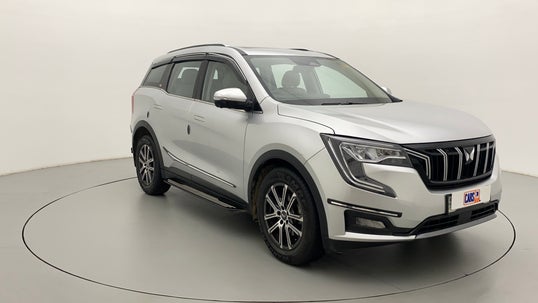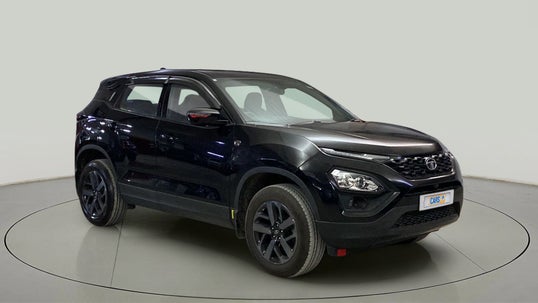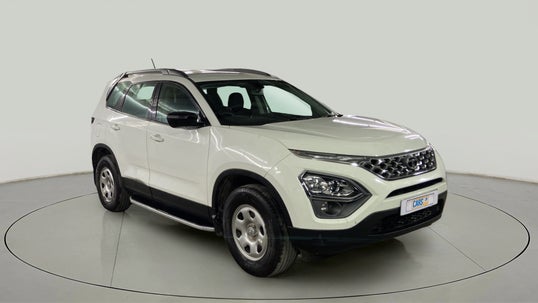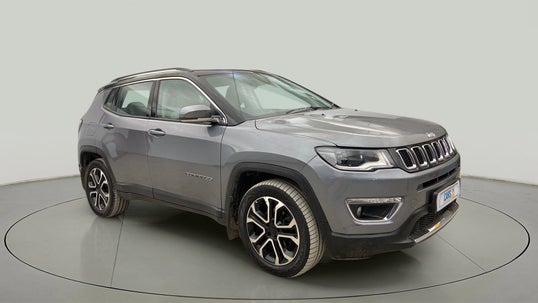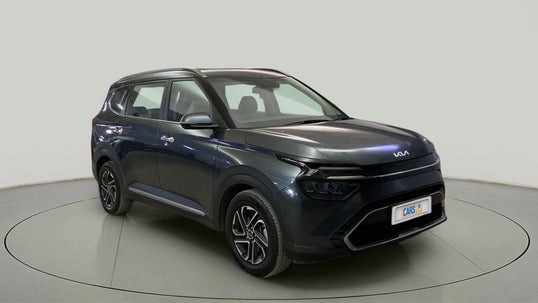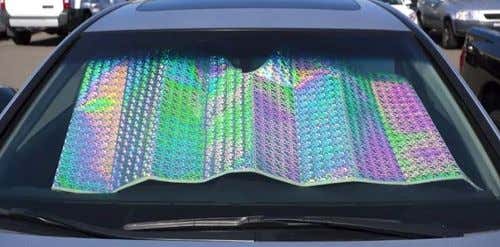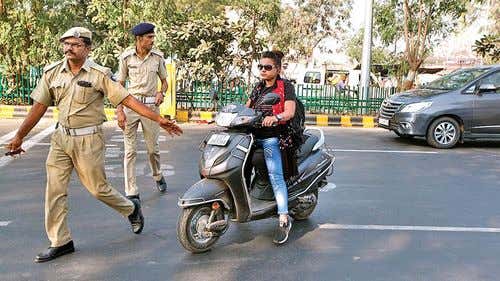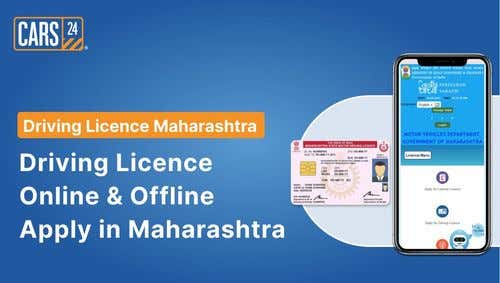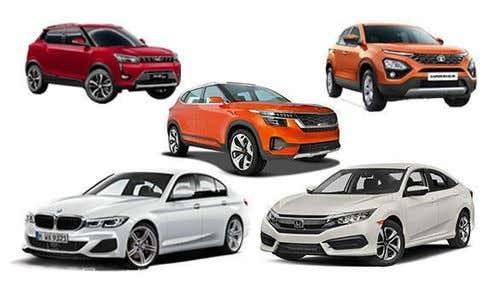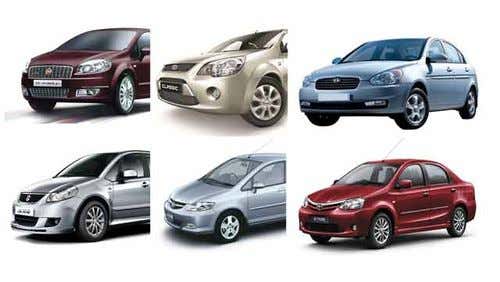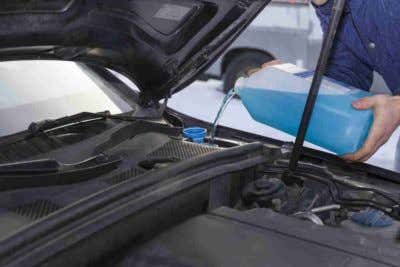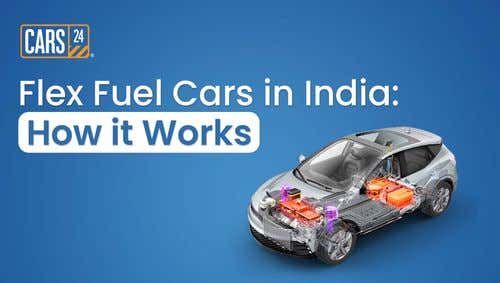Must-Have Safety Features For Your Car

Updated on: 8th April, 2024 IST

The world of science and technology has made incredible advancements that reflect how innovation and reliability can go hand in hand. Modern-day cars come equipped with an impressive range of car safety features which also help determine the safety ratings of a vehicle.
In India, the primary authority responsible for assigning safety ratings is the Global NCAP (GNCAP) which conducts comprehensive tests on cars available in the Indian market to assess their safety performance.
But, a GNCAP safety rating is not the end of the road. There are a lot of safety features, like advanced braking systems and intelligent driver assistance technologies, that diligently work together to provide a secure and comfortable driving experience. Whether you're a tech enthusiast eager for the latest advancements or a safety-conscious driver seeking enhanced protection, this blog will help you understand the essential car safety features.
Table of Contents
- What are Vehicle Safety Features, and Why Are They Important?
- What is the Difference Between Active and Passive Safety Features?
- What are Some Essential Car Safety Features?
- Good-to-have Safety Features
- What is the Future of Car Safety Features in India
- CARS24 Car Scrap Service: Pioneering a Sustainable Tomorrow
- The Bottom Line
- FAQs
What are Vehicle Safety Features, and Why Are They Important?
Vehicle safety features include a range of technologies and systems designed to protect occupants and minimise the risk of accidents on the road. These features serve as a crucial line of defence, safeguarding drivers and passengers from potential harm. With the advancements in automotive engineering, manufacturers are continually integrating innovative safety technologies to enhance the overall safety of vehicles.
Here are some of the key reasons why vehicle safety features are important:
1. Preventing Accidents
Many safety features are designed to assist drivers in avoiding accidents altogether. Technologies such as forward collision warning, lane departure warning, and blind-spot monitoring provide visual and audible alerts to drivers, helping them stay vigilant and avoid potential collisions.
2. Minimising Impact
In the unfortunate event of an accident, safety features are engineered to reduce the severity of injuries. Advanced braking systems like anti-lock braking system (ABS) and electronic stability control (ESC) help maintain control during sudden manoeuvres and prevent skidding.
3. Protecting Occupants
Passive safety features come into play during a collision, protecting occupants. These include features like airbags, seat belts, and reinforced structures. They work in harmony to absorb and distribute the impact forces and minimise injuries.
4. Enhancing Road Safety
Vehicle safety features not only protect the occupants but also contribute to overall road safety. Technologies like automatic emergency braking (AEB) and adaptive headlights help mitigate risks and improve visibility, reducing the likelihood of accidents.
Also Read: New Safety Norms for Cars in India in 2023
What is the Difference Between Active and Passive Safety Features?
By understanding the distinction between active and passive safety features, drivers can appreciate the comprehensive nature of safety systems in modern vehicles. When considering a new vehicle, it is important to understand both types of safety features.
Active safety features are like attentive co-pilots, continuously working to prevent accidents or mitigate potential risks. These technologies are designed to be proactive, helping the driver maintain better control and avoid collisions. Adaptive cruise control, lane departure warning, lane-keeping assist, automatic emergency braking systems, and forward collision warning are some of the most important active safety features.
Passive safety features, on the other hand, are essentially the last line of defense and come into play when an accident or a collision becomes unavoidable. While they cannot prevent the initial impact, their purpose is to minimise the consequences and safeguard the occupants. Airbags, seatbelts, crumple zones, reinforced safety cell structures, and high strength glass are some of the passive safety features that are worth considering.
However, it is important to note that active and passive safety features work together to provide comprehensive protection and should not be considered an alternative for human presence.
What are Some Essential Car Safety Features?
When it comes to prioritising safety on Indian roads, certain car safety features are essential to ensure a secure and confident driving experience. Let's explore some of the must-have safety features that every car buyer in India should consider:
1. Anti-lock Braking System (ABS)

ABS has become a standard in most of the modern vehicles. During emergency braking situations, ABS prevents the wheels from locking up, ensuring that the driver maintains steering control. By pulsating the braking pressure to each wheel, ABS allows for shorter stopping distances while enabling the driver to steer away from obstacles.
2. Electronic Stability Control (ESC)
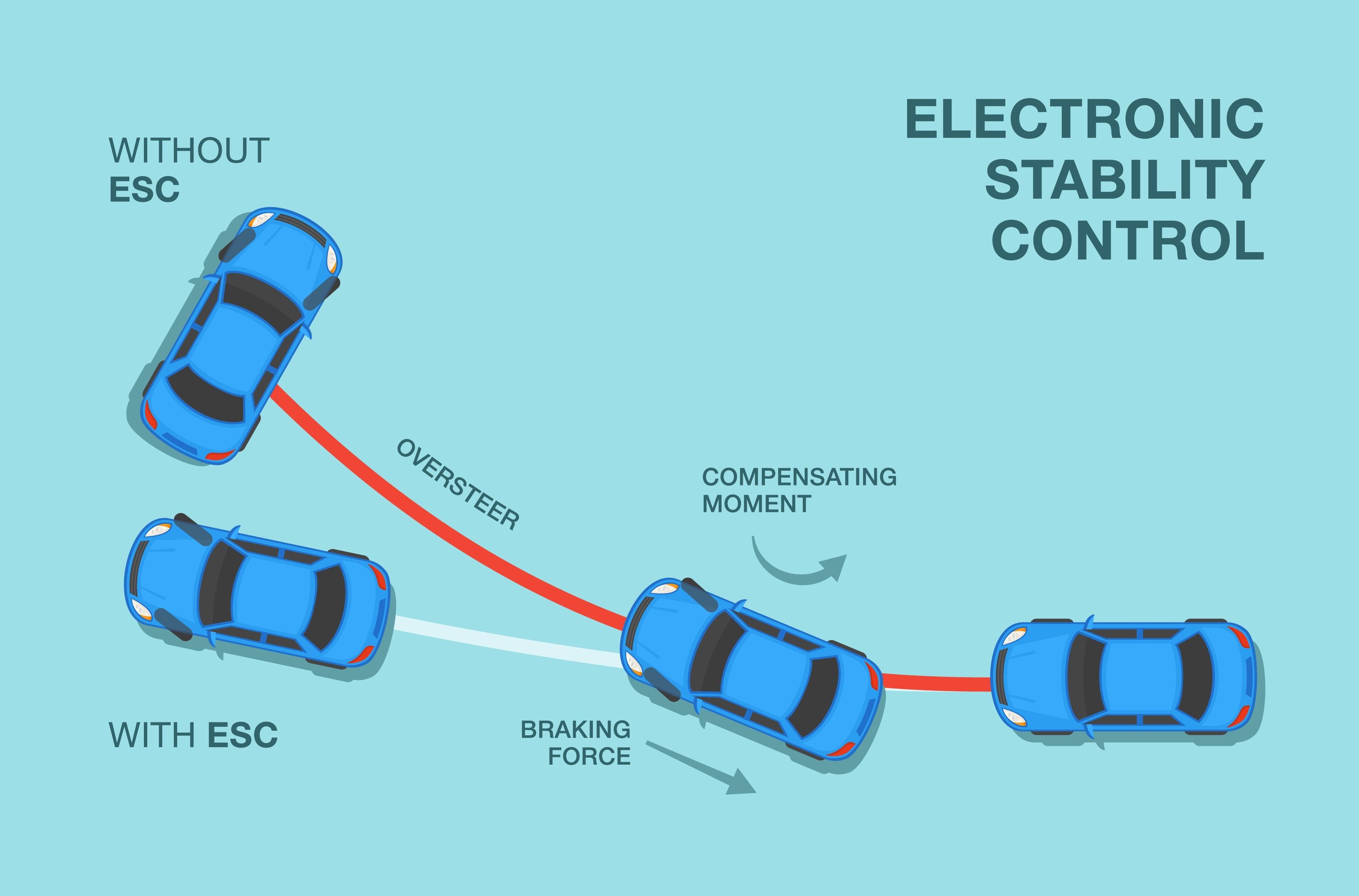
ESC monitors various vehicle parameters, such as steering input, wheel speed, and lateral acceleration. When it detects a loss of control during sudden manoeuvres or on slippery surfaces, it intervenes by selectively braking individual wheels and adjusting engine power. By keeping the vehicle on its intended path, ESC reduces the likelihood of skidding or spinning out of control.
3. Airbags

Airbags are perhaps the most recognisable passive safety feature. These ingenious devices rapidly deploy during a collision, creating a cushioning barrier between the occupants and the hard surfaces of the vehicle's interior. By reducing the impact forces on the head, chest, and other body parts, airbags help mitigate the risk of severe injuries.
4. Seat Belts

Seat belts are an integral component of vehicle safety, serving as the primary restraint system. They secure occupants to their seats, preventing ejection from the vehicle in the event of a collision. Seat belts distribute the forces of impact across stronger parts of the body, such as the chest and pelvis, reducing the risk of serious injuries. Additionally, seat belts equipped with pretensioners tighten in the event of a collision, securing occupants firmly to their seats. Load limiters release some belt tension to mitigate the risk of injury due to excessive force.
5. Reinforced Structures
Vehicle manufacturers engineer their vehicles with reinforced structures designed to absorb and dissipate impact energy. These structures, often referred to as crumple zones, deform in a controlled manner during a collision. By absorbing and redirecting the forces away from the passenger compartment, reinforced structures enhance occupant safety by minimising intrusion and preserving the integrity of the cabin.
6. Rear Parking Sensors/Camera

Rear parking sensors or a camera assist in manoeuvring the vehicle safely by alerting the driver to obstacles behind the vehicle, reducing the risk of accidental collisions.
7. Hill Start Assist (HSA)
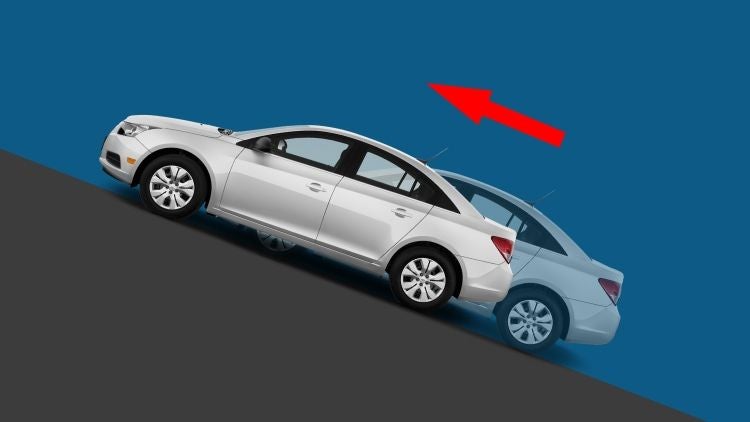
HSA prevents the vehicle from rolling backwards on uphill slopes when starting from a stationary position. It holds the brakes momentarily, giving the driver time to switch from the brake to the accelerator pedal.
8. ISOFIX Child Seat Anchors

ISOFIX anchors provide a secure and standardised method of installing child seats. They ensure proper attachment and reduce the risk of improper installation, enhancing child safety.
9. Speed Sensing Auto Door Locks
This feature automatically locks the doors when the vehicle reaches a certain speed, enhancing security and preventing accidental door opening.
10. Engine Immobiliser
Engine immobilisers prevent unauthorised access to the vehicle by disabling the engine's ignition system, reducing the risk of theft.
11. Emergency Brake Assist
Emergency brake assist detects emergency braking situations and increases brake force to reduce stopping distance. This feature helps drivers respond to sudden obstacles or potential collisions promptly, mitigating the severity of accidents.
12. Side-impact Airbags
Side-impact airbags are designed to protect vehicle occupants during side collisions. These airbags deploy from the door panels and vehicle seats to create a protective barrier, reducing the risk of injury to the head, chest, and abdomen in the event of a side impact.
13. Electronic Brake-force Distribution (EBD)
Electronic Brake-Force Distribution regulates the distribution of braking force to each wheel based on factors like vehicle load and road conditions. This optimises braking efficiency, reducing the likelihood of wheel lockup and enhancing stability, particularly during emergency braking situations, thus promoting safer driving experiences.
Also Read: Best Safe Cars in India – Price, Mileage, Specifications.
Good-to-have Safety Features
In addition to the must-have safety features mentioned earlier, there are some good-to-have features worth considering when planning to buy your next car. Let's take a closer look at some of these features:
1. Advanced Driver Assistance Systems (ADAS)
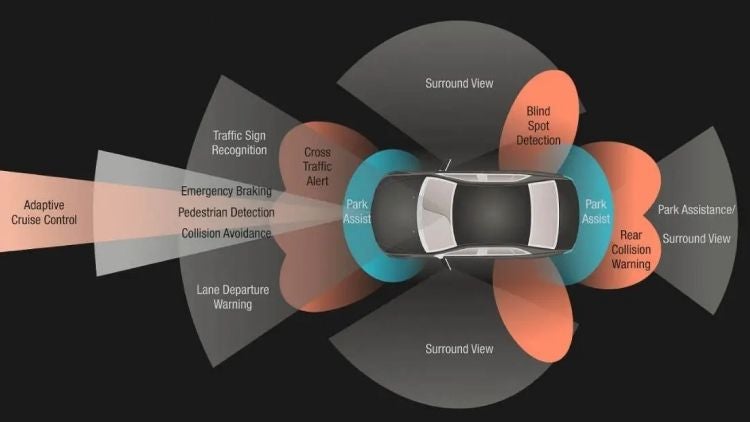
ADAS includes a range of intelligent technologies that assist drivers in various aspects of driving. These systems use sensors, cameras, and algorithms to provide features such as adaptive cruise control, lane-keeping assist, automatic emergency braking, and blind-spot monitoring. ADAS enhances safety by alerting drivers to potential hazards, maintaining vehicle control, and mitigating the risk of collisions. It represents a significant advancement in automotive technology, making driving safer and more convenient.
2. Forward Collision Warning (FCW)
FCW employs sensors, cameras, or radar to detect potential frontal collisions. By monitoring the distance and closing speed between the vehicle and the one ahead, FCW alerts the driver with visual and audible signals. This crucial warning allows the driver to take immediate evasive actions, potentially averting a collision.
3. Tyre Pressure Monitoring System (TPMS)

TPMS constantly monitors the tyre pressure and alerts the driver if any tyre pressure drops below the recommended level. This helps maintain optimal tyre performance and improves safety.
4. Adaptive Headlights
Adaptive headlights are designed to enhance night driving by automatically adjusting their intensity and angle based on steering input, vehicle speed, and road conditions. By illuminating the road ahead more effectively, adaptive headlights provide better visibility, reducing the risk of accidents in low-light conditions.
5. Traffic Sign Recognition
Traffic sign recognition systems employ cameras and image recognition software to identify and display road signs such as speed limits, stop signs, and no-entry signs on the vehicle's dashboard or a heads-up display. This feature helps drivers stay informed about current traffic regulations, ensuring they adhere to speed limits and road signs, thus enhancing road safety.
6. Automatic High Beams
Automatic high beams are a convenient feature that contributes to safety. These headlights can automatically switch between high and low beams based on oncoming traffic or leading vehicles, reducing glare and ensuring optimum visibility during night driving.
7. Rain-Sensing Wipers
Rain-sensing wipers automatically adjust their speed according to the intensity of rainfall, helping drivers maintain clear visibility during wet weather. This feature eliminates the need for manual adjustments, allowing drivers to stay focused on the road and navigate through rain and storms with confidence.
8. Cross-Traffic Alert
Cross-traffic alert systems use radar sensors to detect vehicles approaching from the sides while reversing or at intersections. When a potential collision is detected, the system provides warnings through audible alerts or visual indicators, enhancing driver awareness and preventing accidents during manoeuvres.
Also Read: Best Cars with ADAS in India
What is the Future of Car Safety Features in India
The future of car safety features in India is bright, with many new technologies emerging that can help to prevent accidents and protect occupants in the event of a crash.
One such feature is the Vehicle-to-everything (V2X) communication systems that allows vehicles to communicate with each other and with surrounding infrastructure such as traffic lights and road signs. V2X technology is still in its early stages of development, but is expected to improve traffic flow and reduce accidents.
Another such feature is autonomous driving technology that has the potential to revolutionise car safety by eliminating the human element from the driving equation. While fully autonomous vehicles are not yet globally recognised, some vehicles already offer semi-autonomous features such as adaptive cruise control and lane centering assist.
Overall, the future of car safety features in India is very promising. With the development of new technologies such as ADAS, V2X communication, and autonomous driving, we can expect to see a significant increase in road safety in the coming years.
Also Read: Tips for Avoiding Car Theft and Protecting Your Vehicle
CARS24 Car Scrap Service: Pioneering a Sustainable Tomorrow
In this fast-paced world, innovation and sustainability go hand in hand. When it comes to retiring your old car and upgrading to a safer option, the Vehicle Scrappage Policy, guided by the Supreme Court and NGT, restricts end-of-life (ELV) vehicles like petrol cars older than 15 years and diesel cars older than 10 years.
Now, you can trust CARS24 to make this transition seamless and eco-friendly, prioritising a safer and cleaner future.
How Does CARS24 Car Scrap Service Work?
Step 1. Car Verification
Begin by entering your car's registration number which will help us verify your car's details
Step 2. Self-Inspection
Provide details on your car's condition for a precise estimate
Step 3. Pick Up
A registered scrap vendor will collect your car from your doorstep at your chosen time
Step 4. Payment
You will receive an instant and secure deposit into your bank account post-pickup
The Benefits
1. Fair Price
Receive a fair quote, ensuring that you get what your car is worth while contributing to a cleaner environment
2. Certificate of Deposit
Upon scrapping your vehicle, you'll receive a Certificate of Deposit. This certificate helps you waive registration charges on a new car, earn up to a 25% road tax concession, or trade it for up to ₹25,000.
3. Additional Benefits
Road tax discount of up to 25% on private cars and 15% on commercial cars. You can also get a Government-issued scrap certificate for a 100% discount on the registration fee of a new car, or if you’re not buying a new car, sell the scrap certificate for up to ₹25,000.
4. Government-Registered Vendors
Rest assured, CARS24 partners exclusively with Registered Vendor Scrap Facilities (RVSFs).
Embrace sustainability and make a difference while parting with your old car with CARS24’s car scrapping services. To find a fair price for your car, click here.
Read More: Top 10 Safest Cars in India in 2023 with Global NCAP Rating.
The Bottom Line
In a country like India, where road conditions and traffic situations can be unpredictable, prioritising essential car safety features is paramount. Features such as ABS, ESC, airbags, seat belts with pretensioners, and rear parking sensors/cameras provide crucial protection and enhance driver confidence. Additional features like HSA, ISOFIX anchors, TPMS, and engine immobilisers further contribute to overall safety.
By purchasing vehicles equipped with these must-have safety features, Indian car buyers can ensure a secure and stress-free driving experience on the diverse and challenging roads of the country. If you’re looking for a car with advanced safety features, here is a comprehensive breakdown of the top 10 safest cars in India for 2023, as determined by the latest Global NCAP ratings.
FAQs
Q. What is the most important safety feature?
A comprehensive airbag system is one of the most important safety features in a car.
Q. What are three examples of crucial safety features?
Anti-lock braking systems (ABS), electronic stability control (ESC), and advanced driver-assistance systems (ADAS) are some of the most crucial safety features.
Q. What are the car safety features you must have?
Some of the must-have car safety features in your car include airbags, seat belts, and traction control systems.
Q. What are the safety standards for cars in India?
Car safety standards in India are governed by the Ministry of Road Transport and Highways (MoRTH), which are based on the Automotive Industry Standards (AIS), which are aligned with international standards such as the Global Technical Regulations (GTRs) of the United Nations.
Buy recently added cars
Other Blogs
- Recent
- Featured
Popular Cities to Sell Car


